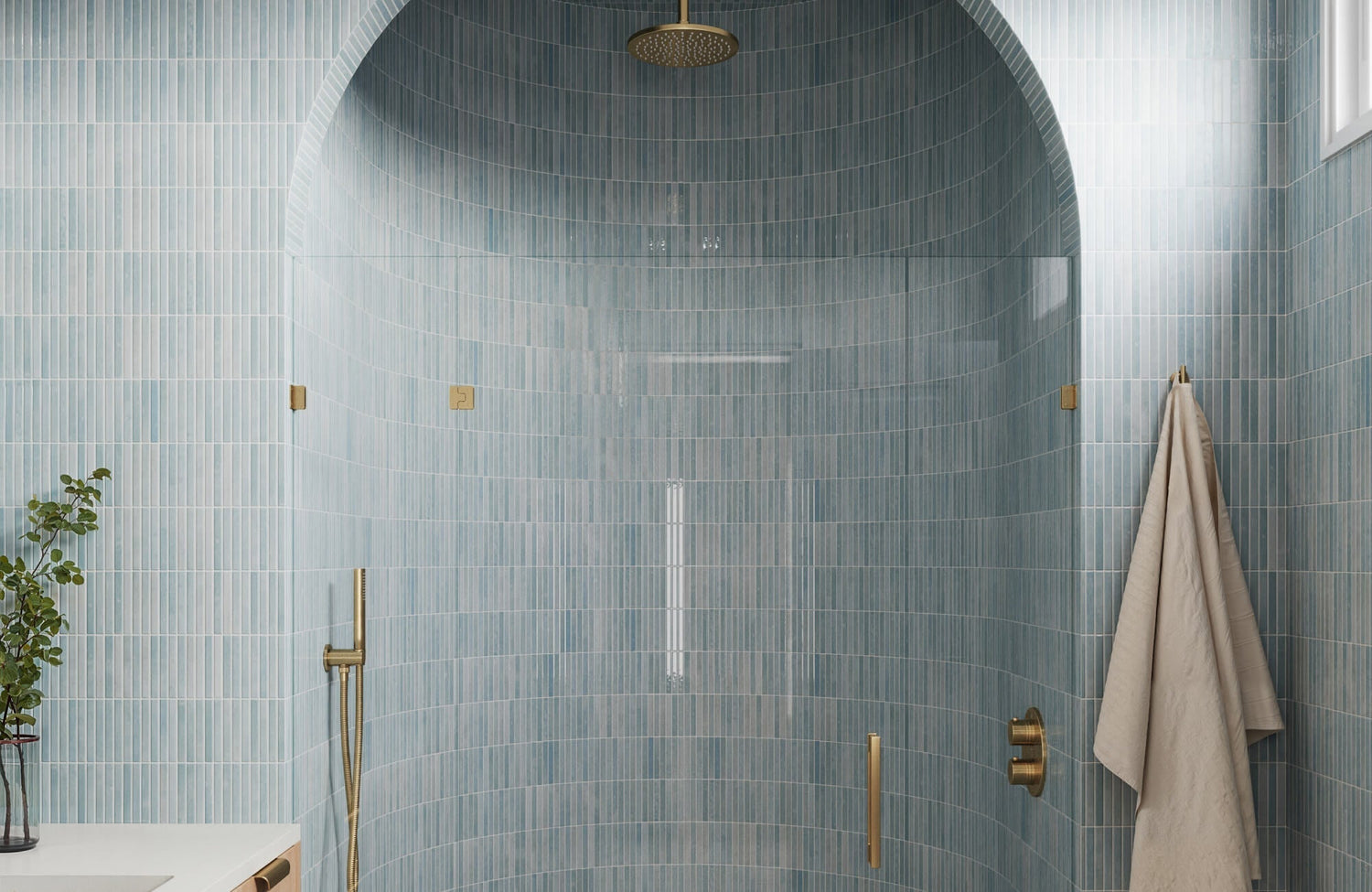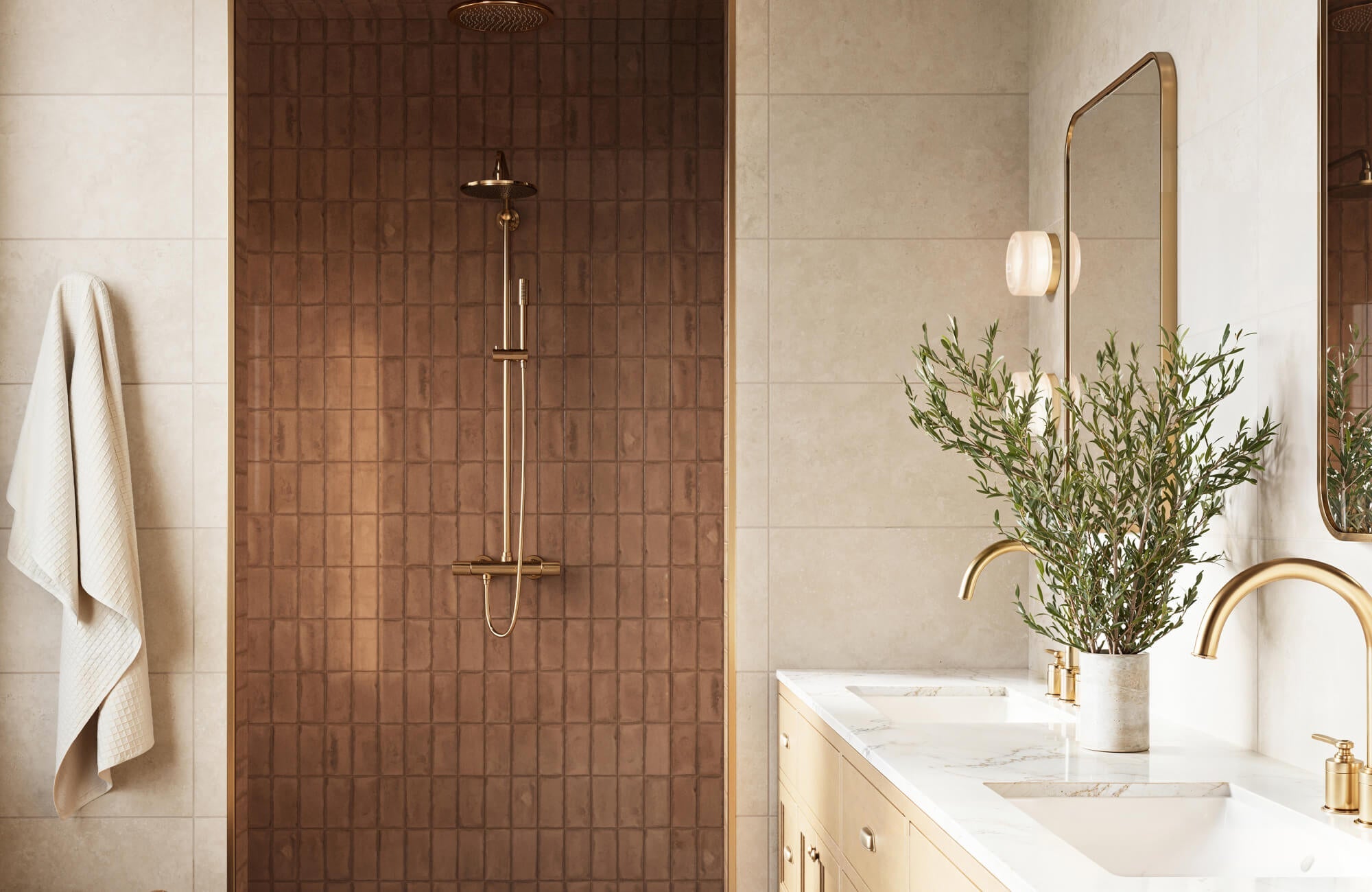Imagine a serene sanctuary where every detail is meticulously curated to evoke tranquility and indulgence. This is your dream bathroom, a haven where you can unwind, rejuvenate, and escape the stresses of daily life. The key to creating such a space lies in the thoughtful selection of bathroom tile.
With a vast array of tile options available, the possibilities are endless. From the timeless elegance of marble to the rustic charm of natural stone, the choice is yours. But selecting the right tile goes beyond mere aesthetics. It's about finding a balance between beauty and functionality, ensuring that your bathroom not only looks stunning but also stands the test of time.
Factors to Consider When Choosing Bathroom Tiles
Before we dive into the aesthetic aspects of bathroom tile, let's prioritize the essential functional considerations that will ensure your bathroom is both beautiful and practical. We will focus on the key factors to consider when choosing tiles for your bathroom, including durability, water resistance, and slip resistance.
Durability & Water Resistance
When selecting bathroom tiles, durability and water resistance are paramount. Bathrooms are inherently high-moisture environments, making it essential to choose tiles that can withstand the constant exposure to water without compromising their integrity.
Waterproof tiles are specifically designed to prevent water from penetrating their surface, making them ideal for areas prone to splashing or direct water contact, such as shower walls and floors. Water-resistant tiles, on the other hand, can withstand moisture but may not be as impervious to water as waterproof options.
Slip Resistance
Safety is a top priority in any bathroom, and slip resistance is a crucial factor to consider when selecting tiles. Wet floors can be slippery, posing a significant risk of accidents. Choosing tiles with sufficient friction can help prevent slips and falls, ensuring a safer bathroom environment.
The slip resistance of a tile is often measured using a coefficient of friction (COF) rating. Higher COF ratings indicate greater slip resistance. When selecting bathroom tiles, it's recommended to choose options with a COF rating of 0.60 or higher to ensure adequate slip resistance.
Textured tiles, mosaics, and other tiles with surface irregularities can provide additional traction and reduce the risk of slipping. However, it's important to strike a balance between slip resistance and aesthetics, as excessively textured tiles may not be visually appealing to everyone.
Maintenance & Cleaning
Ease of maintenance is another important factor to consider when choosing bathroom tiles. Tiles with a smooth, non-porous surface such as glazed ceramic or porcelain are generally easier to clean and maintain. Porous tiles, such as natural stone, may require more frequent cleaning and sealing to prevent stains and water absorption.
Grout color can also impact the overall appearance and maintenance of bathroom tile. Lighter-colored grout can show stains more easily, while darker grout can help to mask dirt and grime. If you prefer a cleaner, more minimalist look, consider using a light-colored grout and sealing it regularly.
Matte porcelain mosaic tiles are a popular choice for bathroom floors due to their low-maintenance properties. Their smooth, non-porous surface is resistant to stains and easy to clean with a simple detergent solution. Their matte finish can also add a more subdued and sophisticated look to a bathroom and help reduce glare to create a more relaxing atmosphere.
Designing Your Dream Bathroom
Creating a bathroom that reflects your personal style and meets your functional needs can be a rewarding experience. This section will guide you through the design process, from choosing the right materials to selecting the perfect layout.
Different Tile Types for Your Bathroom
The choice of tile material can significantly impact the overall aesthetic of your bathroom.
Natural Stone
Natural stone, such as granite, marble and slate, offers a timeless elegance and adds a touch of luxury. These materials are known for their durability and resistance to stains, but they do come with a few drawbacks. Natural stone can be more expensive than other options, and when wet, it may become slippery, posing a safety concern in bathrooms. Additionally, stone surfaces tend to feel cold to the touch and require regular maintenance to keep them in top condition. They are also susceptible to etching from acidic substances and can be heavy, which may require reinforced subfloors.
Ceramic Tiles
Ceramic tiles are a popular and versatile choice for bathrooms due to their affordability and wide range of colors, patterns, and finishes. While slightly less dense than porcelain, ceramic tiles still offer good durability and water resistance, making them suitable for many bathroom applications. Typically, ceramic tiles are glazed, which adds a protective layer and enhances their aesthetic appeal. For example, the Mikayla 5x5 Glossy Ceramic Tile in Olive from Edward Martin shown in the photo above, is a beautiful option that combines both durability and style, adding a unique touch to any bathroom design.
However, ceramic tiles are generally more prone to chipping compared to porcelain, which is why they are often recommended for walls rather than busy floors. That said, ceramic tiles with a higher PEI (Porcelain Enamel Institute) rating can offer greater durability, making them a viable option for floors in certain bathroom designs.
Porcelain Tiles
Porcelain tiles are one of the most popular choices for bathrooms due to their exceptional durability and water resistance. Fired at a higher temperature than regular ceramic tiles, porcelain's dense, non-porous structure makes it highly resistant to water absorption, staining, and moisture. This composition also makes it more resistant to chipping and cracking, making porcelain ideal for other frequently used spaces like kitchens and entryways.
Additionally, porcelain tiles are highly versatile, suitable for both walls and floors, and available in a wide range of styles, colors, and finishes. This allows for endless design possibilities, whether you're aiming for a sleek modern look or a classic aesthetic.
For instance, in busy bathrooms, it’s best to choose porcelain tiles as they withstand heavy use and are easy to clean. You can further ensure safety by choosing slip-resistant tiles or finishes, especially in areas where water is likely to accumulate. Also consider incorporating non-slip mats or rugs for added protection.
Glass Tiles
Glass tiles are a sleek and contemporary choice that can add a touch of sophistication to any bathroom. Available in a wide range of colors and finishes, from translucent to opaque, they offer endless design possibilities. Glass tiles can create a stunning focal point, especially when used for accent walls or backsplashes.
However, glass tiles can be more fragile than other tile materials, making them susceptible to breakage during installation or cleaning. They also tend to be more expensive than ceramic or porcelain tiles, particularly if they feature intricate designs or are hand-crafted.
Choosing the Right Pattern Layout
The layout of your bathroom tiles can have a dramatic impact on the overall design.
Classic Grid
The classic grid pattern is a timeless choice that can create a clean and modern look. However, if you're looking to add more visual interest, consider exploring other patterns.
Herringbone
Herringbone patterns offer a sophisticated and stylish option. They can be used to create a chevron or diagonal effect, adding a touch of drama to your bathroom.
Subway Tile Stacks
Subway tile stacks are another popular choice, offering a classic and versatile look that can be adapted to various design styles.
Mosaic
Mosaics are small tiles that can be used to create intricate patterns and designs. They are available in a wide range of colors and materials, allowing you to add a touch of personality to your bathroom. Mosaics can also be used to create accent walls, backsplashes, or even entire floors for a truly unique and eye-catching design.
Selecting The Right Size Tile for Your Bathroom
When planning a bathroom renovation, the size of your tiles can significantly influence the overall feel and appearance of the space. Smaller tiles can create a more intricate and detailed look, while larger tiles can make a room feel more open and spacious.
For small bathrooms, using larger tiles can help to minimize the number of grout lines, creating a sense of openness. Opting for light-colored tiles can also brighten the room and further enhance the illusion of a larger space. A great option is the Riley 12x12 Matte Porcelain Tile in Striped Pattern Cream, which combines a neutral tone with subtle patterning to add depth without overwhelming the room.
For larger bathrooms, while larger tiles can work well, smaller tiles can add texture and visual interest, especially when combined with intricate patterns or mosaics. Don't be afraid to experiment with different tile sizes and patterns to create a unique and personalized look. Use an AR tool like Edward Martin's to preview tile designs in your space before making a final decision.
By carefully considering these factors, you can select the right size tiles to create a bathroom that is both functional and aesthetically pleasing.

Cost Considerations
When planning a bathroom renovation, it's crucial to consider the costs associated with tiling. While tiles can add a beautiful and durable finish to your bathroom, their price can vary significantly depending on several factors.
Tile Material and Price Points
The cost of bathroom tiles can vary significantly depending on the material chosen. Ceramic tiles, a popular and affordable option, offer a wide range of colors, patterns, and finishes. Porcelain tiles, known for their durability and water resistance, are generally more expensive than ceramic tiles but often provide better value in the long run.
Natural stone tiles, such as marble, granite, and travertine, are considered luxury materials and come with a premium price tag. These tiles can add a touch of elegance and sophistication to a bathroom but require more maintenance and may be susceptible to stains or scratches.
When considering tile costs, it's essential to factor in the size of the tiles. Larger tiles often require less grout, which can reduce labor costs and material expenses. Additionally, consider the tile's finish. Matte finishes may be more affordable than glossy finishes.
Labor Costs and Installation Complexity
The cost of labor for bathroom tile installation can vary depending on several factors, including the complexity of the project, the location, and the experience of the installer. Simple tile patterns and straightforward layouts generally require less labor and therefore lower costs. However, intricate designs, such as mosaics or herringbone patterns, can increase installation time and expense.
The size of the bathroom also plays a role in labor costs. Larger bathrooms will require more tiles and grout, which can translate to higher labor charges. Additionally, the accessibility of the bathroom can affect the installation time and cost. Bathrooms with limited access or unusual shapes may require additional labor to cut and fit the tiles properly.
While DIY tile installation can save on labor costs, it's important to consider the level of skill and experience required. Complex projects may be best left to professionals to ensure a high-quality finish.
Conclusion
Choosing the perfect bathroom tiles is an exciting decision that can transform your bathroom into a functional and stylish haven. By carefully considering factors such as tile material, cost, installation complexity, and unique bathroom needs, you can select tiles that not only enhance your bathroom's aesthetic appeal but also meet your specific requirements.
Remember to explore emerging trends and design inspirations to create a bathroom that reflects your personal style and preferences. With the right tile choices, you can create a space that is both beautiful and functional, providing a relaxing and enjoyable experience for years to come.









